Image of 1956 Chevrolet Bel Air, Note: These illustrations use artistic license and may differ from actual historical models.
Performance Metrics
Fundamental Metrics
Emotional Appeal
MMP Rating
| Engine Specifications | |
|---|---|
| Engine: | 235.5 cu in (3.9 L) Blue Flame I6, 265 cu in (4.3 L) Turbo Fire V8 |
| Displacement: | 235.5-265 cu in |
| Horsepower: | 140-225 hp |
| Torque: | 210-300 lb-ft |
| Compression Ratio: | 8.0:1 |
| Ignition System: | Conventional breaker-point ignition system |
| Cooling System: | Liquid-cooled |
| Performance Specifications | |
| 0-60 Time: | 10-12 seconds |
| 1/4 Mile Time: | 17-19 seconds |
| Top Speed: | 105-120 mph |
| Transmission and Drive | |
| Drive Type: | Rear-wheel drive |
| Transmission Type: | 2-speed Powerglide automatic, 3-speed manual |
| Fuel and Efficiency | |
| Fuel System Type: | Carburetor |
| MPG: | 15-20 mpg |
| Dimensions and Brakes | |
| Brakes: | Drum brakes |
| Wheelbase: | 115 inches |
| Weight: | 3,200-3,500 lbs |
Note: Specifications for classic cars are given to the best of our ability, considering the limited and variant data available.
1956 Chevrolet Bel Air: An Icon of American Automotive Excellence
The 1956 Chevrolet Bel Air stands as a testament to a bygone era of automotive design, where chrome glistened under diner lights and tailfins hinted at the space age. Born from the bustling post-war American economy, this vehicle emerged from the Chevrolet division of General Motors, capturing the hearts of car enthusiasts with its blend of style, performance, and accessibility. The Bel Air's distinctive two-tone paint job and sleek lines became emblematic of 1950s Americana. A unique fact that car aficionados cherish is that the '56 model was the first to offer a fuel injection option—a technological leap forward in consumer vehicles.
Design and Innovation
The exterior of the 1956 Bel Air was a symphony of chrome trim, sweeping fenders, and a bold grille that demanded attention. Its iconic side trim design, separating contrasting paint colors, became its signature. Inside, passengers were treated to plush vinyl upholstery and stylish dashboards that reflected the optimism of the era. The quality of materials and attention to detail were remarkable for a mass-produced vehicle. Technologically, it boasted innovations like electric wipers and optional air conditioning. Color options ranged from classic two-tones like Matador Red and Dune Beige to striking shades like Nassau Blue. The most iconic body style was undoubtedly the two-door Nomad wagon, which combined utility with unparalleled style.
Historical Significance
The 1956 Bel Air didn't just represent another car; it was a cultural phenomenon that influenced automotive design for decades. It set itself apart with its level of luxury and features at an affordable price point. The introduction of safety features such as seat belts and shoulder harnesses marked a new era in vehicle safety consciousness.
Performance and Handling
Under the hood lay a choice of engines, but it was the available 265 cubic-inch V8 with the 'Power Pack' option that provided spirited performance, pushing the car to speeds that could top 100 mph—a respectable figure for its time. The Bel Air's handling was poised for a full-sized sedan, absorbing road imperfections gracefully while offering a sense of control through sweeping bends. Drivers often reminisce about the throaty rumble of the V8 engine and the sensation of commanding such an iconic piece of machinery.
Ownership Experience
The 1956 Bel Air found its place as a versatile vehicle: a dependable daily driver for some, a weekend cruiser for others, and even a competitive racer in various classic car circuits. Its reliability was one of its strong suits, with straightforward mechanics that made maintenance manageable for the average owner.
Fun Facts
This classic has seen its share of limelight with rare editions like the 'El Morocco', which mimicked more expensive Cadillac models. Celebrity ownerships have added to its allure; stars like Steve McQueen had a fondness for these machines. Despite criticisms over fuel economy—a lesser concern in its heyday—the Bel Air has held an enduring appeal.
Collector's Information
Today, collectors clamor for well-preserved or expertly restored examples of the 1956 Chevrolet Bel Air. Estimates suggest that over 1.5 million units were produced across all body styles. Values vary widely based on condition and originality but typically range from $20,000 for models needing work to well over $100,000 for pristine examples or rare configurations like the Nomad or convertible. The market shows appreciation for these classics as they continue to be sought-after pieces of automotive history.
Conclusion
The 1956 Chevrolet Bel Air remains an indelible icon that captures the spirit of its age while continuing to enchant classic car enthusiasts today. Its blend of style, innovation, and performance cements its place in automotive lore as not just a mode of transport but as an emblematic artifact representing America's golden age on wheels.
1956 Chevrolet Bel Air Catalog of Parts
 1956 Chevrolet Bel Air Upper Door Hinge Seals. Straight section 13-1/2" long-ALP 1Upper Door Hinge Seals. Straight section 13-1/2" long. Curved hook section 6" long, with 2 holes. Includes four clips. Pair R & L.
1956 Chevrolet Bel Air Upper Door Hinge Seals. Straight section 13-1/2" long-ALP 1Upper Door Hinge Seals. Straight section 13-1/2" long. Curved hook section 6" long, with 2 holes. Includes four clips. Pair R & L. 1956 Chevrolet Bel Air Upper Door Hinge Seals. Straight section 16-3/4" long-ALP 1-AUpper Door Hinge Seals. Straight section 16-3/4" long. Square hooked section 6-1/4" long. Includes four clips. Pair R & L.
1956 Chevrolet Bel Air Upper Door Hinge Seals. Straight section 16-3/4" long-ALP 1-AUpper Door Hinge Seals. Straight section 16-3/4" long. Square hooked section 6-1/4" long. Includes four clips. Pair R & L. 1956 Chevrolet Bel Air Accelerator Pedal Pad, 55-57 Chevrolet, Each-AP 31Complete Accelerator Pedal Pad with steel core for '55-'57 Chevrolets. Exact reproduction. 1-3/4" X 8-7/8". Each
1956 Chevrolet Bel Air Accelerator Pedal Pad, 55-57 Chevrolet, Each-AP 31Complete Accelerator Pedal Pad with steel core for '55-'57 Chevrolets. Exact reproduction. 1-3/4" X 8-7/8". Each 1956 Chevrolet Bel Air Body mounting cushion pad-BC 51Body mounting cushion pad, '51-'64 Various GM car and truck models, each. Replace OEM #'s 3748937, 530855 & 560958.
1956 Chevrolet Bel Air Body mounting cushion pad-BC 51Body mounting cushion pad, '51-'64 Various GM car and truck models, each. Replace OEM #'s 3748937, 530855 & 560958. 1956 Chevrolet Bel Air Body Mount Kit-BCK 10Body Mount Kit. Complete kit replaces all upper and lower body cushions. 3 types of body mounts. 32 pieces total.
1956 Chevrolet Bel Air Body Mount Kit-BCK 10Body Mount Kit. Complete kit replaces all upper and lower body cushions. 3 types of body mounts. 32 pieces total. 1956 Chevrolet Bel Air Bumper to Body Seal. 1-3/8" wide X 7' long. Each-BG 109-BBumper to Body Seal. 1-3/8" wide X 7' long. Each
1956 Chevrolet Bel Air Bumper to Body Seal. 1-3/8" wide X 7' long. Each-BG 109-BBumper to Body Seal. 1-3/8" wide X 7' long. Each 1956 Chevrolet Bel Air Shock Absorber Grommet. 1" bottom O.D., 3/4" high-BN 1Shock Absorber Grommet. 1" bottom O.D., 3/4" high., with 7/16" I.D. Each
1956 Chevrolet Bel Air Shock Absorber Grommet. 1" bottom O.D., 3/4" high-BN 1Shock Absorber Grommet. 1" bottom O.D., 3/4" high., with 7/16" I.D. Each 1956 Chevrolet Bel Air Front Stabilizer Bushings. Made of the best rubber-BN 105Front Stabilizer Bushings. Made of the best rubber. 1-1/2" high X 1-7/16" long. Pair
1956 Chevrolet Bel Air Front Stabilizer Bushings. Made of the best rubber-BN 105Front Stabilizer Bushings. Made of the best rubber. 1-1/2" high X 1-7/16" long. Pair 1956 Chevrolet Bel Air Shock Absorber Grommet. 1" bottom O.D-BN 11Shock Absorber Grommet. 1" bottom O.D., 3/4" high, with 5/8" I.D. Each
1956 Chevrolet Bel Air Shock Absorber Grommet. 1" bottom O.D-BN 11Shock Absorber Grommet. 1" bottom O.D., 3/4" high, with 5/8" I.D. Each 1956 Chevrolet Bel Air Front coil-spring insulator-BN 110Front coil-spring insulator. Fits '41-'60 Oldsmobile and '50-'83 GM passenger models. 5-3/8 in. OD x 3-3/4 in. ID x 3/4 in. high with 13/16 in. wide bottom flange 1/4" thick, 12 flutes. Each.
1956 Chevrolet Bel Air Front coil-spring insulator-BN 110Front coil-spring insulator. Fits '41-'60 Oldsmobile and '50-'83 GM passenger models. 5-3/8 in. OD x 3-3/4 in. ID x 3/4 in. high with 13/16 in. wide bottom flange 1/4" thick, 12 flutes. Each. 1956 Chevrolet Bel Air Shock Absorber Grommet. 1" bottom O.D., 5/8" high-BN 13Shock Absorber Grommet. 1" bottom O.D., 5/8" high., with 3/8" I.D. Each
1956 Chevrolet Bel Air Shock Absorber Grommet. 1" bottom O.D., 5/8" high-BN 13Shock Absorber Grommet. 1" bottom O.D., 5/8" high., with 3/8" I.D. Each 1956 Chevrolet Bel Air Spring and Shackle Bushing. 1-1/16" bottom O.D-BN 14Spring and Shackle Bushing. 1-1/16" bottom O.D. X 1-1/2" high, with 5/8" I.D. Each
1956 Chevrolet Bel Air Spring and Shackle Bushing. 1-1/16" bottom O.D-BN 14Spring and Shackle Bushing. 1-1/16" bottom O.D. X 1-1/2" high, with 5/8" I.D. Each 1956 Chevrolet Bel Air Front Stabilizer End Repair Kit-BNK 23Front Stabilizer End Repair Kit. 22-piece set for two stabilizer bars. Contains all rubber bushings, washers, bolts and nuts, enough for one front end. Set
1956 Chevrolet Bel Air Front Stabilizer End Repair Kit-BNK 23Front Stabilizer End Repair Kit. 22-piece set for two stabilizer bars. Contains all rubber bushings, washers, bolts and nuts, enough for one front end. Set 1956 Chevrolet Bel Air Cowl and Hood Seal. All rubber. 5' Piece. Each-CS 2Cowl and Hood Seal. All rubber. 5' Piece. Each
1956 Chevrolet Bel Air Cowl and Hood Seal. All rubber. 5' Piece. Each-CS 2Cowl and Hood Seal. All rubber. 5' Piece. Each 1956 Chevrolet Bel Air Hood to Cowl Seal. 13/16" wide X 52" long. Each-CS 55Hood to Cowl Seal. 13/16" wide X 52" long. Each
1956 Chevrolet Bel Air Hood to Cowl Seal. 13/16" wide X 52" long. Each-CS 55Hood to Cowl Seal. 13/16" wide X 52" long. Each 1956 Chevrolet Bel Air Door and Trunk Bumper. 1/2" O.D. X 1/2" high. Each-DB 35Door and Trunk Bumper. 1/2" O.D. X 1/2" high. Each
1956 Chevrolet Bel Air Door and Trunk Bumper. 1/2" O.D. X 1/2" high. Each-DB 35Door and Trunk Bumper. 1/2" O.D. X 1/2" high. Each 1956 Chevrolet Bel Air Deck Lid Lower Edge Support Bumper-DB 45Deck Lid Lower Edge Support Bumper. Installs in Trunk Gutter. Each
1956 Chevrolet Bel Air Deck Lid Lower Edge Support Bumper-DB 45Deck Lid Lower Edge Support Bumper. Installs in Trunk Gutter. Each 1956 Chevrolet Bel Air Upper Door Hinge Post Bumper. Held by screw-DB 60-AUpper Door Hinge Post Bumper. Held by screw. 7/8" diameter X 1/8" thick. Each
1956 Chevrolet Bel Air Upper Door Hinge Post Bumper. Held by screw-DB 60-AUpper Door Hinge Post Bumper. Held by screw. 7/8" diameter X 1/8" thick. Each 1956 Chevrolet Bel Air Center Division Bar Seal and Retainer-DP 16Center Division Bar Seal and Retainer. Made to original specifications to accommodate chrome molding. 17-1/2" long. Each
1956 Chevrolet Bel Air Center Division Bar Seal and Retainer-DP 16Center Division Bar Seal and Retainer. Made to original specifications to accommodate chrome molding. 17-1/2" long. Each 1956 Chevrolet Bel Air Door, Hood and Trunk Bumper Cap for adjustment bolt-HA 5Door, Hood and Trunk Bumper Cap for adjustment bolt. 7/8" diameter X 7/16" thick. Each
1956 Chevrolet Bel Air Door, Hood and Trunk Bumper Cap for adjustment bolt-HA 5Door, Hood and Trunk Bumper Cap for adjustment bolt. 7/8" diameter X 7/16" thick. Each 1956 Chevrolet Bel Air Door and Hood Bumper. 1" diameter X 7/8" thick. Each-HF 16Door and Hood Bumper. 1" diameter X 7/8" thick. Each
1956 Chevrolet Bel Air Door and Hood Bumper. 1" diameter X 7/8" thick. Each-HF 16Door and Hood Bumper. 1" diameter X 7/8" thick. Each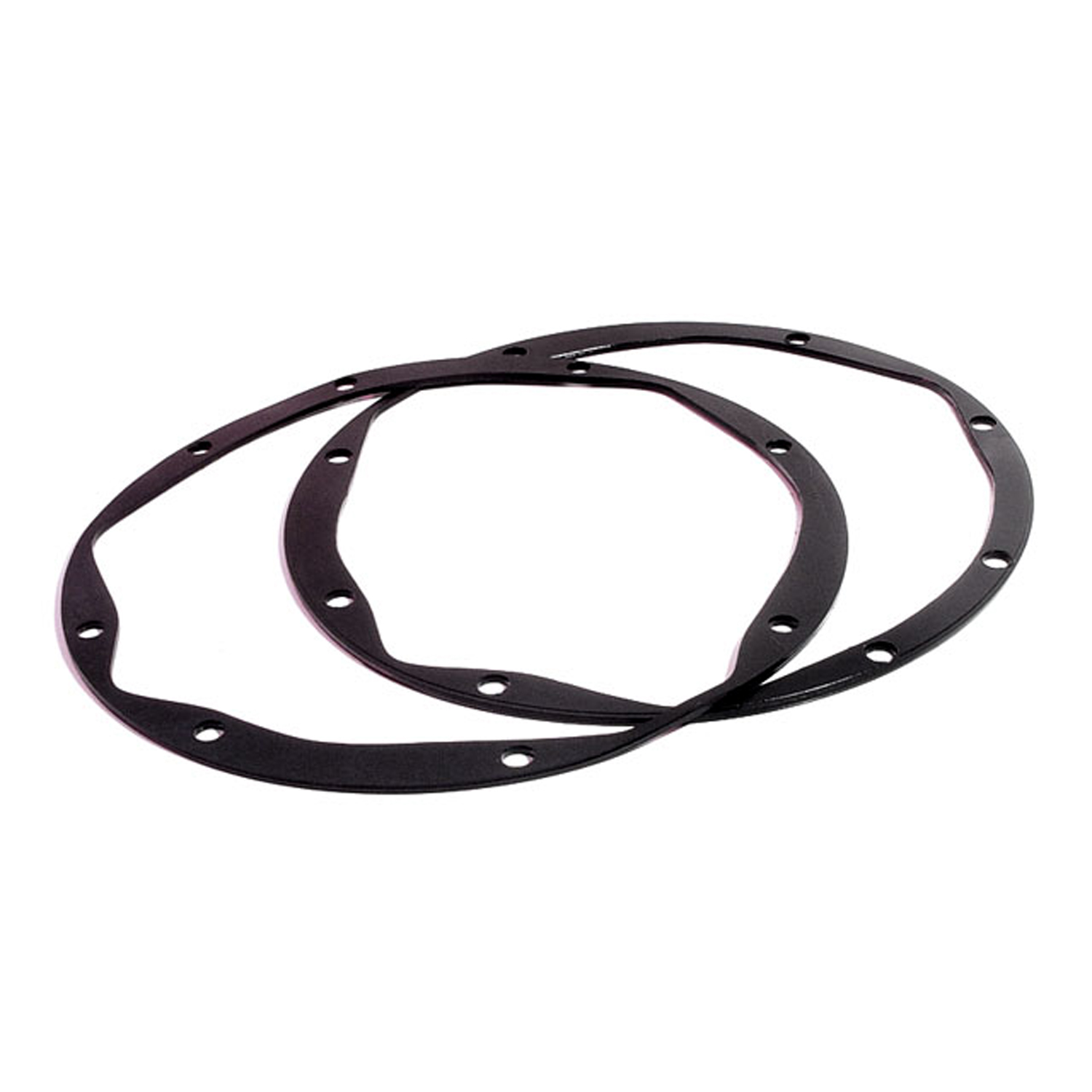 1956 Chevrolet Bel Air Headlight Assembly Housing Pad. 8-3/8" O.D. Pair-HR 7Headlight Assembly Housing Pad. 8-3/8" O.D. Pair
1956 Chevrolet Bel Air Headlight Assembly Housing Pad. 8-3/8" O.D. Pair-HR 7Headlight Assembly Housing Pad. 8-3/8" O.D. Pair 1956 Chevrolet Bel Air Trip Meter Reset Knob. Made of black rubber-KN 10Trip Meter Reset Knob. Made of black rubber. Compare to measurements: 1/8" I.D., 7/16" O.D. X 1/2" tall. Each
1956 Chevrolet Bel Air Trip Meter Reset Knob. Made of black rubber-KN 10Trip Meter Reset Knob. Made of black rubber. Compare to measurements: 1/8" I.D., 7/16" O.D. X 1/2" tall. Each 1956 Chevrolet Bel Air 6-Piece Lens Gasket Kit.-LGK 2004-1016-Piece Lens Gasket Kit.
1956 Chevrolet Bel Air 6-Piece Lens Gasket Kit.-LGK 2004-1016-Piece Lens Gasket Kit. 1956 Chevrolet Bel Air Molded Door Seals with Clips, without Molded Ends-LM 54Molded Door Seals with Clips, without Molded Ends. For 2-door hardtop and convertible. Each 108" long. Pair R&L
1956 Chevrolet Bel Air Molded Door Seals with Clips, without Molded Ends-LM 54Molded Door Seals with Clips, without Molded Ends. For 2-door hardtop and convertible. Each 108" long. Pair R&L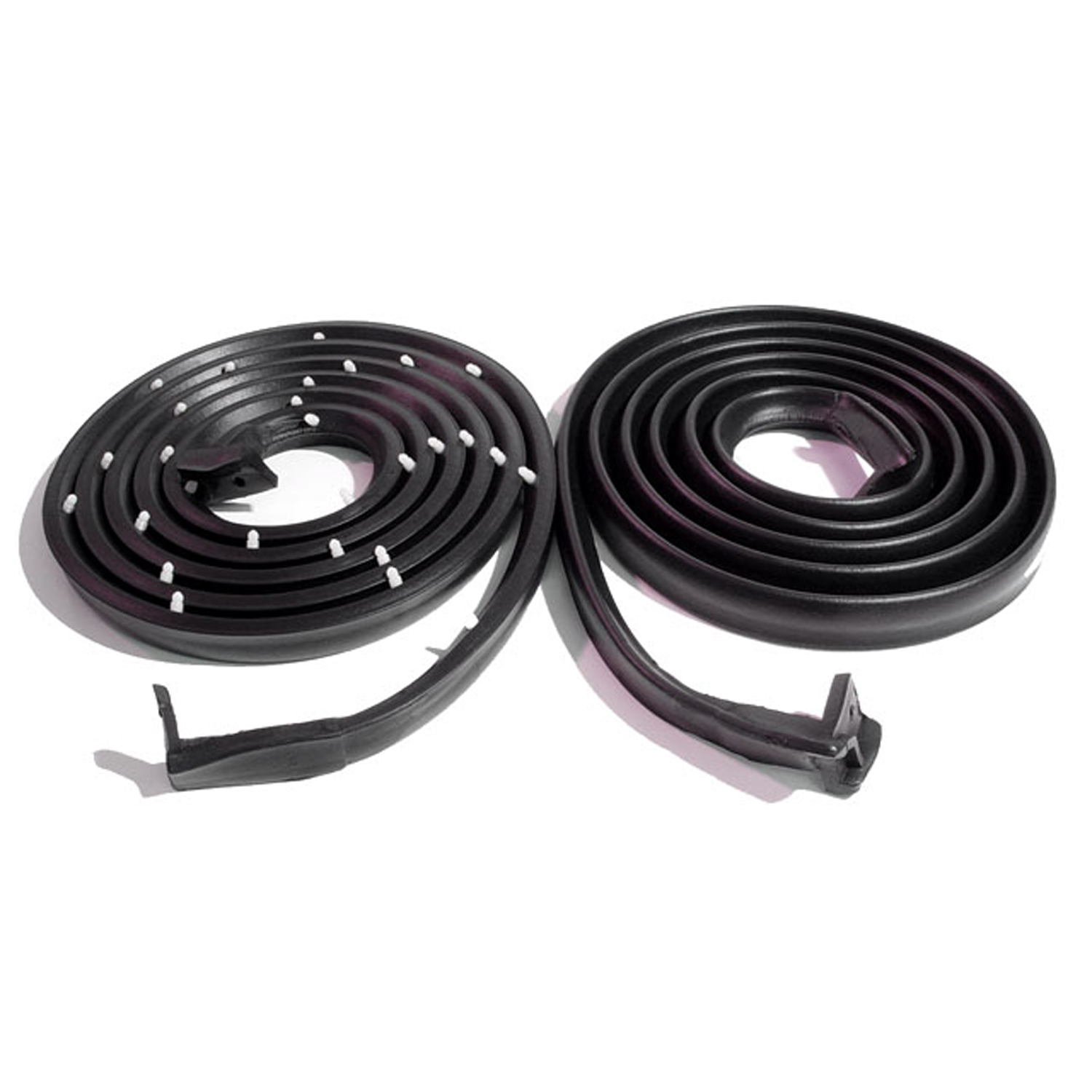 1956 Chevrolet Bel Air Molded Door Seals with Clips and Molded Ends-LM 55Molded Door Seals with Clips and Molded Ends. For 2-door hardtop and convertible. Each 115-1/2" long. Pair R&L
1956 Chevrolet Bel Air Molded Door Seals with Clips and Molded Ends-LM 55Molded Door Seals with Clips and Molded Ends. For 2-door hardtop and convertible. Each 115-1/2" long. Pair R&L 1956 Chevrolet Bel Air Molded Door Seals with Clips and Molded Ends-LM 55-NMolded Door Seals with Clips and Molded Ends. For 2-Door Station Wagon. Each 116-1/2" long. Pair R&L
1956 Chevrolet Bel Air Molded Door Seals with Clips and Molded Ends-LM 55-NMolded Door Seals with Clips and Molded Ends. For 2-Door Station Wagon. Each 116-1/2" long. Pair R&L 1956 Chevrolet Bel Air Molded Door Seals with Clips-LM 56Molded Door Seals with Clips. Fit '55-'57 Chevrolet, Oldsmobile and Pontiac 2-Door Station Wagon, and 2-Door Sedan/Sedan Delivery Models. 165" long each. Pair R&L.
1956 Chevrolet Bel Air Molded Door Seals with Clips-LM 56Molded Door Seals with Clips. Fit '55-'57 Chevrolet, Oldsmobile and Pontiac 2-Door Station Wagon, and 2-Door Sedan/Sedan Delivery Models. 165" long each. Pair R&L. 1956 Chevrolet Bel Air Front Molded Door Seals with Clips. For 4-Door Sedan-LM 56-AFront Molded Door Seals with Clips. For 4-Door Sedan. Pair R&L
1956 Chevrolet Bel Air Front Molded Door Seals with Clips. For 4-Door Sedan-LM 56-AFront Molded Door Seals with Clips. For 4-Door Sedan. Pair R&L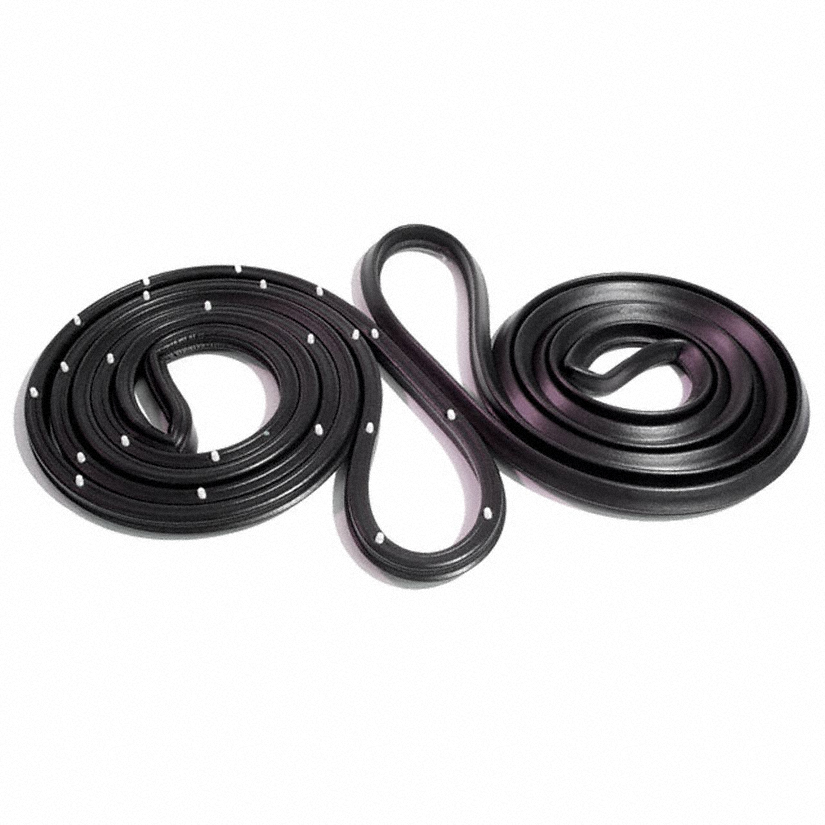 1956 Chevrolet Bel Air Rear Molded Door Seals with Clips. For 4-Door Sedan-LM 56-A/RRear Molded Door Seals with Clips. For 4-Door Sedan. Pair R&L
1956 Chevrolet Bel Air Rear Molded Door Seals with Clips. For 4-Door Sedan-LM 56-A/RRear Molded Door Seals with Clips. For 4-Door Sedan. Pair R&L 1956 Chevrolet Bel Air Rear Bumper Gravel Shield Seal. 1-3/8" wide-LP 109-B/FTRear Bumper Gravel Shield Seal. 1-3/8" wide. Sold by the foot
1956 Chevrolet Bel Air Rear Bumper Gravel Shield Seal. 1-3/8" wide-LP 109-B/FTRear Bumper Gravel Shield Seal. 1-3/8" wide. Sold by the foot 1956 Chevrolet Bel Air Roof Rail Seals Two 6' pieces. No steel insert. May fit some models Pair-LP 110-BRoof Rail Seals. No steel insert. May fit some models. Two 6' pieces. Pair
1956 Chevrolet Bel Air Roof Rail Seals Two 6' pieces. No steel insert. May fit some models Pair-LP 110-BRoof Rail Seals. No steel insert. May fit some models. Two 6' pieces. Pair 1956 Chevrolet Bel Air Door side seal. Same as LP 40-A, but for a heavier seal-LP 40Door side seal. Same as LP 40-A, but for a heavier seal. Fits many domestic passenger cars and trucks. Used in Cobra kit cars as trunk weatherstrip. Per foot.
1956 Chevrolet Bel Air Door side seal. Same as LP 40-A, but for a heavier seal-LP 40Door side seal. Same as LP 40-A, but for a heavier seal. Fits many domestic passenger cars and trucks. Used in Cobra kit cars as trunk weatherstrip. Per foot.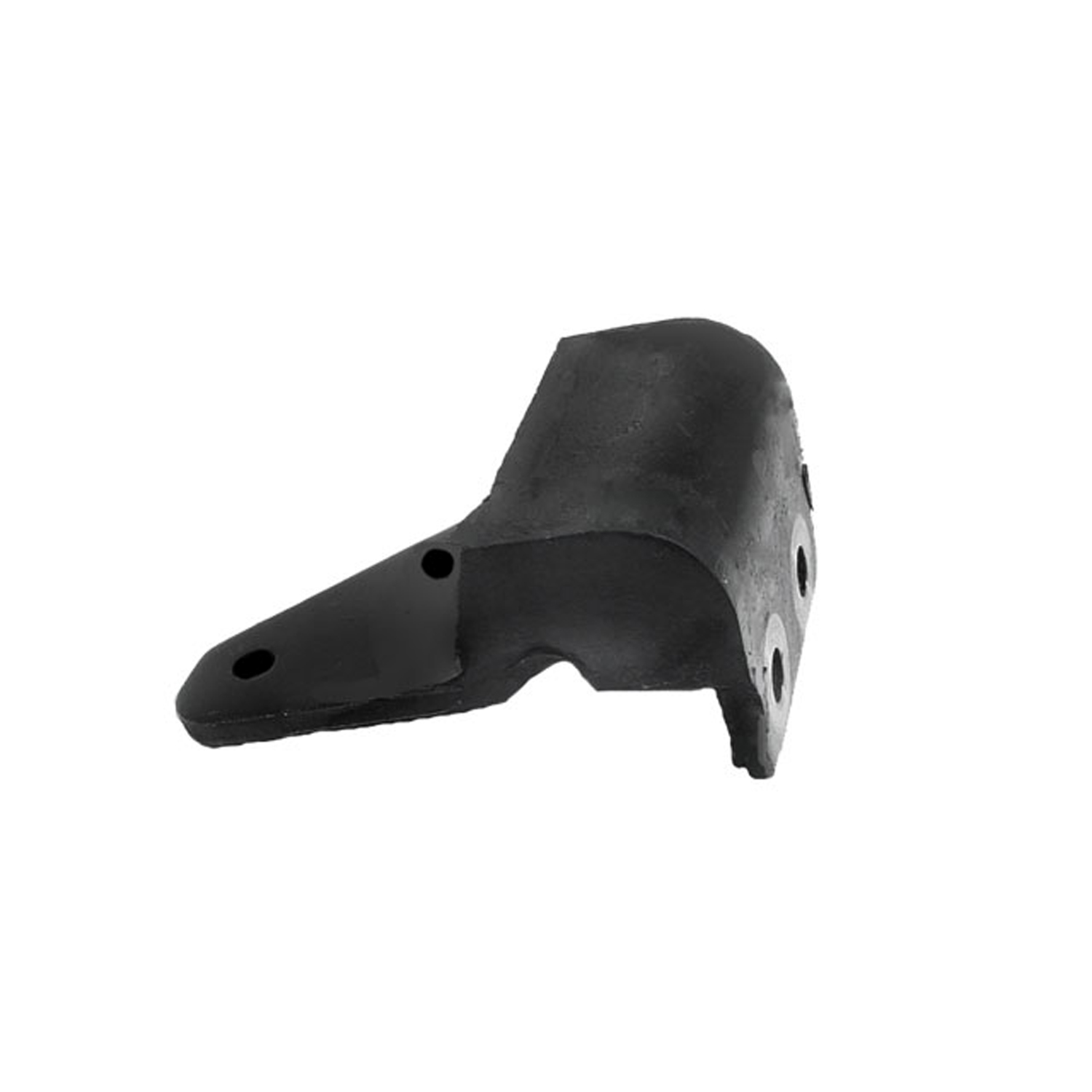 1956 Chevrolet Bel Air Left Rear Motor Mount-MM 18Left Rear Motor Mount. For models with standard transmission. Two used per car. Replaces OEM #27285078. Each
1956 Chevrolet Bel Air Left Rear Motor Mount-MM 18Left Rear Motor Mount. For models with standard transmission. Two used per car. Replaces OEM #27285078. Each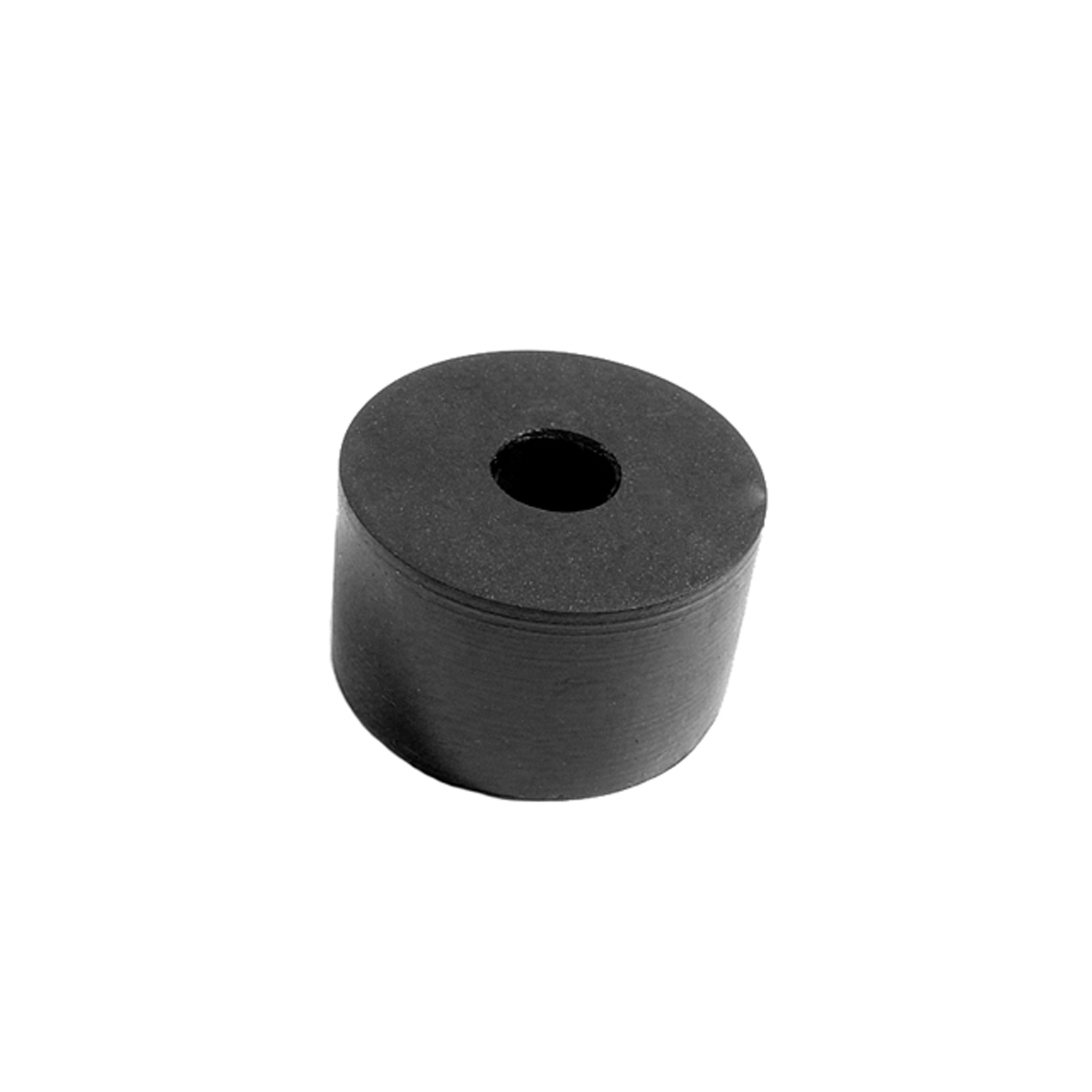 1956 Chevrolet Bel Air Small Front Cushion. Four used per vehicle-MM 7Small Front Cushion. Four used per vehicle. Replaces OEM #3714358. 1-1/2" O.D., 1/2" I.D. Each
1956 Chevrolet Bel Air Small Front Cushion. Four used per vehicle-MM 7Small Front Cushion. Four used per vehicle. Replaces OEM #3714358. 1-1/2" O.D., 1/2" I.D. Each 1956 Chevrolet Bel Air Large Front Cushion. Four used per vehicle-MM 7-ALarge Front Cushion. Four used per vehicle. Replaces OEM #3714357. 2" O.D., 7/16" I.D. Each
1956 Chevrolet Bel Air Large Front Cushion. Four used per vehicle-MM 7-ALarge Front Cushion. Four used per vehicle. Replaces OEM #3714357. 2" O.D., 7/16" I.D. Each 1956 Chevrolet Bel Air Door Handle Pads. 2-1/2" long & 1-1/4" long-MP 538Door Handle Pads. 2-1/2" long & 1-1/4" long. 4-Piece Set R&L
1956 Chevrolet Bel Air Door Handle Pads. 2-1/2" long & 1-1/4" long-MP 538Door Handle Pads. 2-1/2" long & 1-1/4" long. 4-Piece Set R&L 1956 Chevrolet Bel Air Door Lock Pad. 1-3/8" O.D. Each-MP 538-ADoor Lock Pad. 1-3/8" O.D. Each
1956 Chevrolet Bel Air Door Lock Pad. 1-3/8" O.D. Each-MP 538-ADoor Lock Pad. 1-3/8" O.D. Each 1956 Chevrolet Bel Air Headlight Trim to Fender Gasket. Two strips, each 25" long-MP 546-SHeadlight Trim to Fender Gasket. Two strips, each 25" long. Pair
1956 Chevrolet Bel Air Headlight Trim to Fender Gasket. Two strips, each 25" long-MP 546-SHeadlight Trim to Fender Gasket. Two strips, each 25" long. Pair 1956 Chevrolet Bel Air Antenna Pad. 1-3/4" wide X 4-1/4" long. Each-MP 547-CAntenna Pad. 1-3/4" wide X 4-1/4" long. Each
1956 Chevrolet Bel Air Antenna Pad. 1-3/4" wide X 4-1/4" long. Each-MP 547-CAntenna Pad. 1-3/4" wide X 4-1/4" long. Each 1956 Chevrolet Bel Air Starter Solenoid Boot-RP 1-WStarter Solenoid Boot. Solenoid plunger starter switch at starter. Each
1956 Chevrolet Bel Air Starter Solenoid Boot-RP 1-WStarter Solenoid Boot. Solenoid plunger starter switch at starter. Each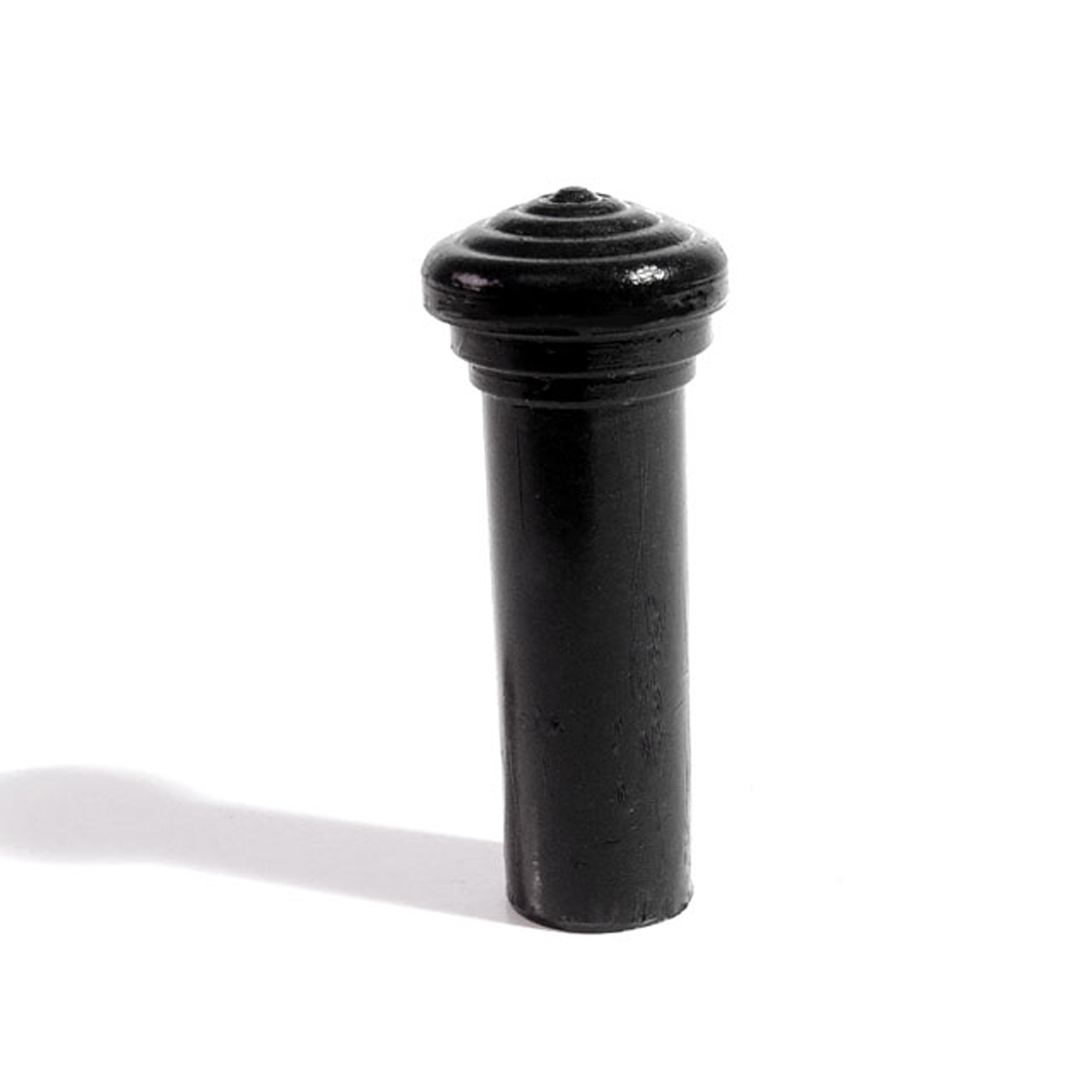 1956 Chevrolet Bel Air Door Lock Knob. Made of Black rubber, self-threading-RP 304-ADoor Lock Knob. Made of Black rubber, self-threading. 1-3/8" tall with 1/8" lower I.D., 3/8" lower O.D. Each
1956 Chevrolet Bel Air Door Lock Knob. Made of Black rubber, self-threading-RP 304-ADoor Lock Knob. Made of Black rubber, self-threading. 1-3/8" tall with 1/8" lower I.D., 3/8" lower O.D. Each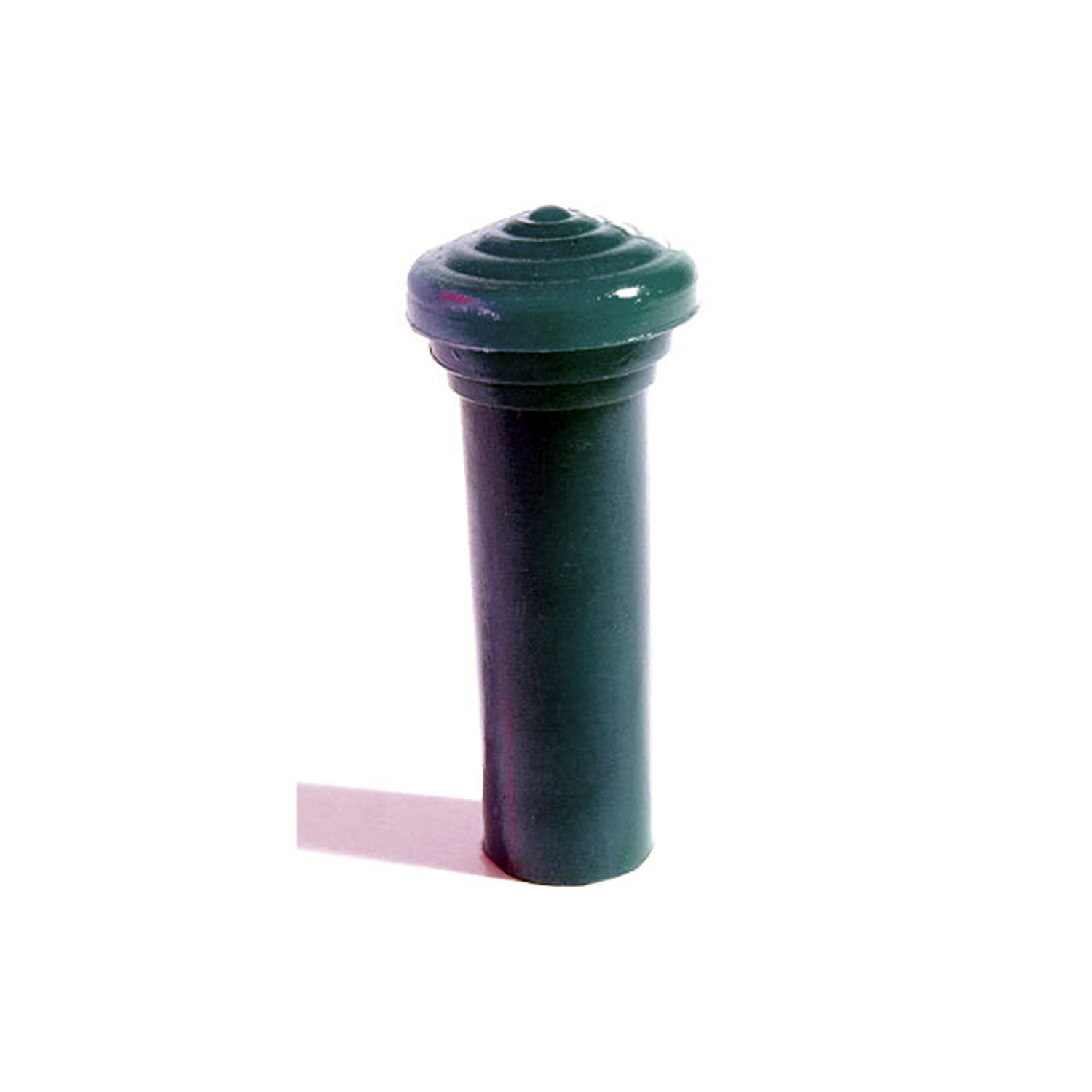 1956 Chevrolet Bel Air Door Lock Knob. Made of Slate Blue rubber, self-threading-RP 304-CDoor Lock Knob. Made of Slate Blue rubber, self-threading. 1-3/8" tall with 1/8" lower I.D., 3/8" lower O.D. Each
1956 Chevrolet Bel Air Door Lock Knob. Made of Slate Blue rubber, self-threading-RP 304-CDoor Lock Knob. Made of Slate Blue rubber, self-threading. 1-3/8" tall with 1/8" lower I.D., 3/8" lower O.D. Each 1956 Chevrolet Bel Air Door Lock Knob. Made of Navy Blue rubber, self-threading-RP 304-DDoor Lock Knob. Made of Navy Blue rubber, self-threading. 1-3/8" tall with 1/8" lower I.D., 3/8" lower O.D. Each
1956 Chevrolet Bel Air Door Lock Knob. Made of Navy Blue rubber, self-threading-RP 304-DDoor Lock Knob. Made of Navy Blue rubber, self-threading. 1-3/8" tall with 1/8" lower I.D., 3/8" lower O.D. Each 1956 Chevrolet Bel Air Door Lock Knob. Made of Silver Blue rubber, self-threading-RP 304-EDoor Lock Knob. Made of Silver Blue rubber, self-threading. 1-3/8" tall with 1/8" lower I.D., 3/8" lower O.D. Each
1956 Chevrolet Bel Air Door Lock Knob. Made of Silver Blue rubber, self-threading-RP 304-EDoor Lock Knob. Made of Silver Blue rubber, self-threading. 1-3/8" tall with 1/8" lower I.D., 3/8" lower O.D. Each 1956 Chevrolet Bel Air Door Lock Knob. Made of Fawn colored rubber, self-threading-RP 304-FDoor Lock Knob. Made of Fawn colored rubber, self-threading. 1-3/8" tall with 1/8" lower I.D., 3/8" lower O.D. Each
1956 Chevrolet Bel Air Door Lock Knob. Made of Fawn colored rubber, self-threading-RP 304-FDoor Lock Knob. Made of Fawn colored rubber, self-threading. 1-3/8" tall with 1/8" lower I.D., 3/8" lower O.D. Each 1956 Chevrolet Bel Air Door Lock Knob. Made of Olive Green rubber, self-threading-RP 304-GDoor Lock Knob. Made of Olive Green rubber, self-threading. 1-3/8" tall with 1/8" lower I.D., 3/8" lower O.D. Each
1956 Chevrolet Bel Air Door Lock Knob. Made of Olive Green rubber, self-threading-RP 304-GDoor Lock Knob. Made of Olive Green rubber, self-threading. 1-3/8" tall with 1/8" lower I.D., 3/8" lower O.D. Each 1956 Chevrolet Bel Air Door Lock Knob. Made of Yellow rubber, self-threading-RP 304-HDoor Lock Knob. Made of Yellow rubber, self-threading. 1-3/8" tall with 1/8" lower I.D., 3/8" lower O.D. Each
1956 Chevrolet Bel Air Door Lock Knob. Made of Yellow rubber, self-threading-RP 304-HDoor Lock Knob. Made of Yellow rubber, self-threading. 1-3/8" tall with 1/8" lower I.D., 3/8" lower O.D. Each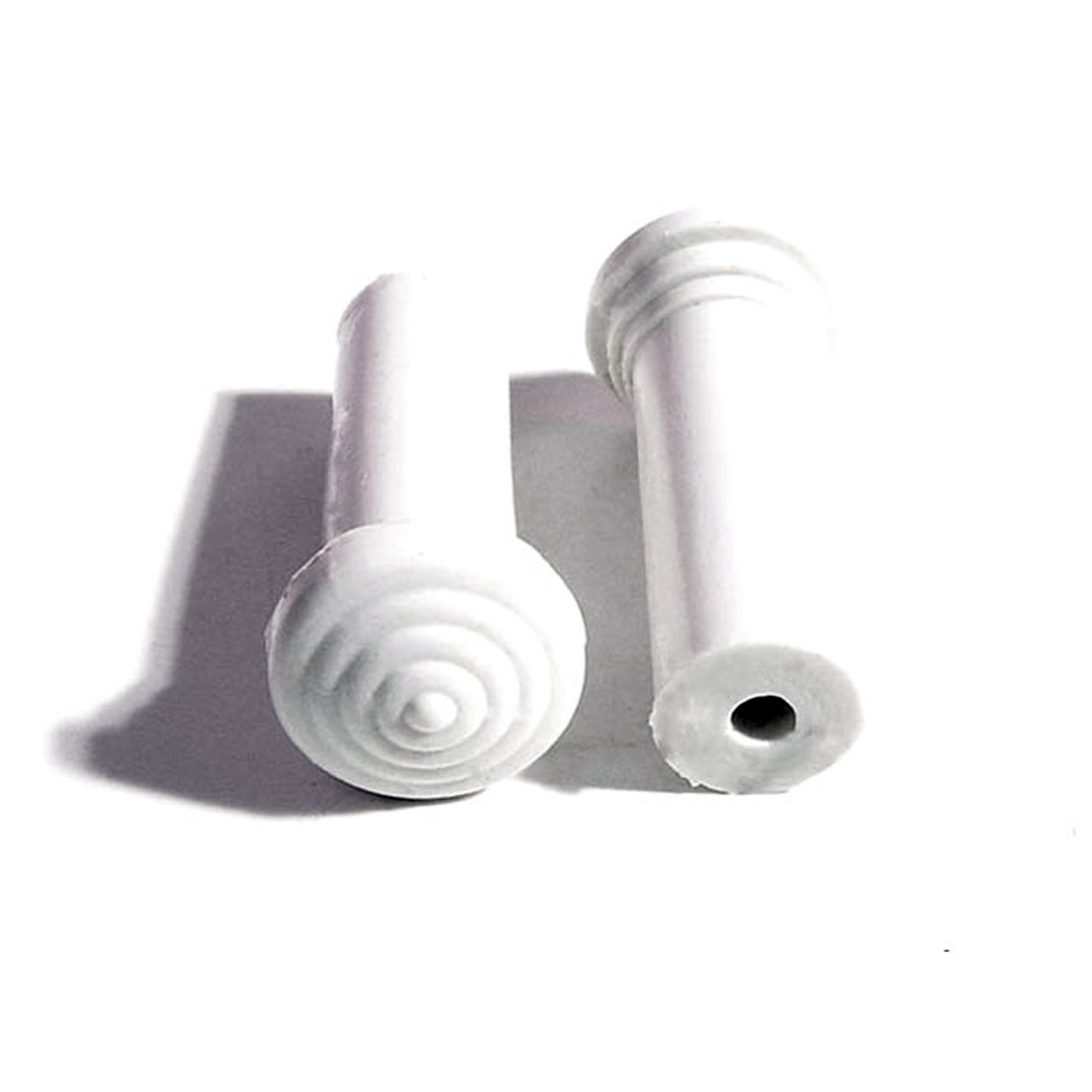 1956 Chevrolet Bel Air Door Lock Knob. Made of White rubber, self-threading-RP 304-IDoor Lock Knob. Made of White rubber, self-threading. 1-3/8" tall with 1/8" lower I.D., 3/8" lower O.D. Each
1956 Chevrolet Bel Air Door Lock Knob. Made of White rubber, self-threading-RP 304-IDoor Lock Knob. Made of White rubber, self-threading. 1-3/8" tall with 1/8" lower I.D., 3/8" lower O.D. Each 1956 Chevrolet Bel Air Door Lock Knob. Made of Silver rubber, self-threading-RP 304-JDoor Lock Knob. Made of Silver rubber, self-threading. 1-3/8" tall with 1/8" lower I.D., 3/8" lower O.D. Each
1956 Chevrolet Bel Air Door Lock Knob. Made of Silver rubber, self-threading-RP 304-JDoor Lock Knob. Made of Silver rubber, self-threading. 1-3/8" tall with 1/8" lower I.D., 3/8" lower O.D. Each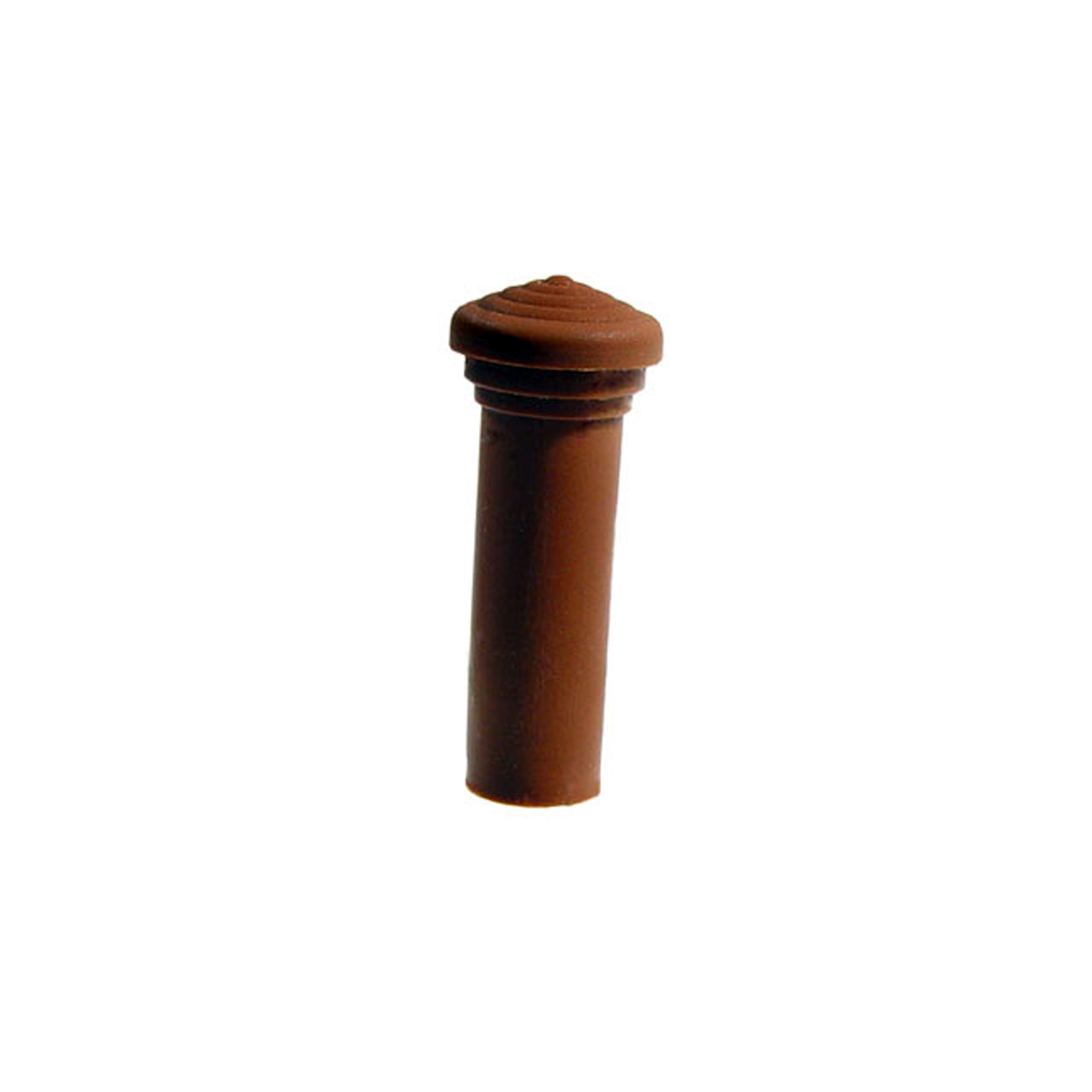 1956 Chevrolet Bel Air Door Lock Knob. Made of Medium Brown rubber, self-threading-RP 304-KDoor Lock Knob. Made of Medium Brown rubber, self-threading. 1-3/8" tall with 1/8" lower I.D., 3/8" lower O.D. Each
1956 Chevrolet Bel Air Door Lock Knob. Made of Medium Brown rubber, self-threading-RP 304-KDoor Lock Knob. Made of Medium Brown rubber, self-threading. 1-3/8" tall with 1/8" lower I.D., 3/8" lower O.D. Each 1956 Chevrolet Bel Air Door Lock Knob. Made of Wedgwood rubber, self-threading-RP 304-LDoor Lock Knob. Made of Wedgwood rubber, self-threading. 1-3/8" tall with 1/8" lower I.D., 3/8" lower O.D. Each
1956 Chevrolet Bel Air Door Lock Knob. Made of Wedgwood rubber, self-threading-RP 304-LDoor Lock Knob. Made of Wedgwood rubber, self-threading. 1-3/8" tall with 1/8" lower I.D., 3/8" lower O.D. Each 1956 Chevrolet Bel Air Door Lock Knob. Made of Teal Green rubber, self-threading-RP 304-MDoor Lock Knob. Made of Teal Green rubber, self-threading. 1-3/8" tall with 1/8" lower I.D., 3/8" lower O.D. Each
1956 Chevrolet Bel Air Door Lock Knob. Made of Teal Green rubber, self-threading-RP 304-MDoor Lock Knob. Made of Teal Green rubber, self-threading. 1-3/8" tall with 1/8" lower I.D., 3/8" lower O.D. Each 1956 Chevrolet Bel Air Door Lock Knob. Made of Moss Green rubber, self-threading-RP 304-NDoor Lock Knob. Made of Moss Green rubber, self-threading. 1-3/8" tall with 1/8" lower I.D., 3/8" lower O.D. Each
1956 Chevrolet Bel Air Door Lock Knob. Made of Moss Green rubber, self-threading-RP 304-NDoor Lock Knob. Made of Moss Green rubber, self-threading. 1-3/8" tall with 1/8" lower I.D., 3/8" lower O.D. Each 1956 Chevrolet Bel Air Door Lock Knob. Made of Ember glow rubber, self-threading-RP 304-ODoor Lock Knob. Made of Ember glow rubber, self-threading. 1-3/8" tall with 1/8" lower I.D., 3/8" lower O.D. Each
1956 Chevrolet Bel Air Door Lock Knob. Made of Ember glow rubber, self-threading-RP 304-ODoor Lock Knob. Made of Ember glow rubber, self-threading. 1-3/8" tall with 1/8" lower I.D., 3/8" lower O.D. Each 1956 Chevrolet Bel Air Antenna Hole Plug, 55-57 Chevy Bel Air, 210, 150, Nomad, Each-SB 108-AAntenna Hole Plug, 55-57 Chevy Bel Air, 210, 150, Nomad, Each. Plug for vehicles without a fender mounted antenna.
1956 Chevrolet Bel Air Antenna Hole Plug, 55-57 Chevy Bel Air, 210, 150, Nomad, Each-SB 108-AAntenna Hole Plug, 55-57 Chevy Bel Air, 210, 150, Nomad, Each. Plug for vehicles without a fender mounted antenna. 1956 Chevrolet Bel Air Trunk Floor Plug. Two used per trunk. Each-SB 155Trunk Floor Plug. Two used per trunk. Each
1956 Chevrolet Bel Air Trunk Floor Plug. Two used per trunk. Each-SB 155Trunk Floor Plug. Two used per trunk. Each 1956 Chevrolet Bel Air Door Bumper. Made with twin retainers-SB 32Door Bumper. Made with twin retainers. 3/4" high X 1/2" wide X 15/16" long. Each
1956 Chevrolet Bel Air Door Bumper. Made with twin retainers-SB 32Door Bumper. Made with twin retainers. 3/4" high X 1/2" wide X 15/16" long. Each 1956 Chevrolet Bel Air Trunk Bumper. Fits lower corner on decklid. 15/16" O.D-SB 34Trunk Bumper. Fits lower corner on decklid. 15/16" O.D., 11/16" high. Each
1956 Chevrolet Bel Air Trunk Bumper. Fits lower corner on decklid. 15/16" O.D-SB 34Trunk Bumper. Fits lower corner on decklid. 15/16" O.D., 11/16" high. Each 1956 Chevrolet Bel Air Fuel Door Bumper. Held by screw. 1/2" X 1/2" X 1/4"-SB 65Fuel Door Bumper. Held by screw. 1/2" X 1/2" X 1/4". Pair
1956 Chevrolet Bel Air Fuel Door Bumper. Held by screw. 1/2" X 1/2" X 1/4"-SB 65Fuel Door Bumper. Held by screw. 1/2" X 1/2" X 1/4". Pair 1956 Chevrolet Bel Air Side Window Bumper-SB 98Side Window Bumper. For side window glass in vent frame at top of window. Made with steel core like original. Replaces OEM #4180904-5. Pair R&L
1956 Chevrolet Bel Air Side Window Bumper-SB 98Side Window Bumper. For side window glass in vent frame at top of window. Made with steel core like original. Replaces OEM #4180904-5. Pair R&L 1956 Chevrolet Bel Air Steering Column at Floor Pad. For models with power brakes-SC 21Steering Column at Floor Pad. For models with power brakes. Each
1956 Chevrolet Bel Air Steering Column at Floor Pad. For models with power brakes-SC 21Steering Column at Floor Pad. For models with power brakes. Each 1956 Chevrolet Bel Air Inner Splash Flaps. Made with cloth backing-SI 2004-201Inner Splash Flaps. Made with cloth backing. Used as dust and mud shield to keep engine compartments clean. Made from stiff rubber that is identical to original in composition, texture and color. Pair
1956 Chevrolet Bel Air Inner Splash Flaps. Made with cloth backing-SI 2004-201Inner Splash Flaps. Made with cloth backing. Used as dust and mud shield to keep engine compartments clean. Made from stiff rubber that is identical to original in composition, texture and color. Pair 1956 Chevrolet Bel Air Speedometer Cable / Utility Grommet-SM 2Speedometer Cable / Utility Grommet. Fits 3/4" to 13/16" hole. 3/16" center hole. Each
1956 Chevrolet Bel Air Speedometer Cable / Utility Grommet-SM 2Speedometer Cable / Utility Grommet. Fits 3/4" to 13/16" hole. 3/16" center hole. Each 1956 Chevrolet Bel Air Wire Harness Grommet. Each-SM 3Wire Harness Grommet. Each
1956 Chevrolet Bel Air Wire Harness Grommet. Each-SM 3Wire Harness Grommet. Each 1956 Chevrolet Bel Air Spark Plug Wires Grommet. V-8's Only. Each-SM 30-ASpark Plug Wires Grommet. V-8's Only. Each
1956 Chevrolet Bel Air Spark Plug Wires Grommet. V-8's Only. Each-SM 30-ASpark Plug Wires Grommet. V-8's Only. Each 1956 Chevrolet Bel Air Wire Harness Grommet to Firewall. Finely detailed. Each-SM 38-AWire Harness Grommet to Firewall. Finely detailed. Each
1956 Chevrolet Bel Air Wire Harness Grommet to Firewall. Finely detailed. Each-SM 38-AWire Harness Grommet to Firewall. Finely detailed. Each 1956 Chevrolet Bel Air Wire Grommet for backup & license plate light. 3/4" O.D-SM 3-AWire Grommet for backup & license plate light. 3/4" O.D., 1/4" I.D. Each
1956 Chevrolet Bel Air Wire Grommet for backup & license plate light. 3/4" O.D-SM 3-AWire Grommet for backup & license plate light. 3/4" O.D., 1/4" I.D. Each 1956 Chevrolet Bel Air Special Purpose Grommet-SM 4Special Purpose Grommet. For firewall, fuel gauge wire, horn wire, hood latch cable and fresh air cable. Fits 1/2" hole. 1/8" center hole. Each
1956 Chevrolet Bel Air Special Purpose Grommet-SM 4Special Purpose Grommet. For firewall, fuel gauge wire, horn wire, hood latch cable and fresh air cable. Fits 1/2" hole. 1/8" center hole. Each 1956 Chevrolet Bel Air Hole Plug and Cowl Bumper. Fits 1/2" hole. Each-SM 52Hole Plug and Cowl Bumper. Fits 1/2" hole. Each
1956 Chevrolet Bel Air Hole Plug and Cowl Bumper. Fits 1/2" hole. Each-SM 52Hole Plug and Cowl Bumper. Fits 1/2" hole. Each 1956 Chevrolet Bel Air Headlight Wire Grommet-SM 57Headlight Wire Grommet. Used with square clip (not included). Fits 7/8" hole. 7/16" center hole. Each
1956 Chevrolet Bel Air Headlight Wire Grommet-SM 57Headlight Wire Grommet. Used with square clip (not included). Fits 7/8" hole. 7/16" center hole. Each 1956 Chevrolet Bel Air Master Cylinder Rod Dust Boot. Each-SM 65-EMaster Cylinder Rod Dust Boot. Each
1956 Chevrolet Bel Air Master Cylinder Rod Dust Boot. Each-SM 65-EMaster Cylinder Rod Dust Boot. Each 1956 Chevrolet Bel Air Accelerator Pedal Pad Trim Grommet. Black, Rubber-SM 79-AAccelerator Pedal Pad Trim Grommet. Black, Rubber. Each (Other colors may be available)
1956 Chevrolet Bel Air Accelerator Pedal Pad Trim Grommet. Black, Rubber-SM 79-AAccelerator Pedal Pad Trim Grommet. Black, Rubber. Each (Other colors may be available) 1956 Chevrolet Bel Air Firewall and Utility Grommet. Fits 3/4" hole. 3/16" I.D-SM 8Firewall and Utility Grommet. Fits 3/4" hole. 3/16" I.D. Each
1956 Chevrolet Bel Air Firewall and Utility Grommet. Fits 3/4" hole. 3/16" I.D-SM 8Firewall and Utility Grommet. Fits 3/4" hole. 3/16" I.D. Each 1956 Chevrolet Bel Air Dimmer Switch Grommet-SM 80-A/BKDimmer Switch Grommet. Has flange to fit into carpet or floor mat. 2-1/2" flange with 1" I.D. for dimmer switch. Black, Rubber. Each (Other colors may be available)
1956 Chevrolet Bel Air Dimmer Switch Grommet-SM 80-A/BKDimmer Switch Grommet. Has flange to fit into carpet or floor mat. 2-1/2" flange with 1" I.D. for dimmer switch. Black, Rubber. Each (Other colors may be available) 1956 Chevrolet Bel Air Accelerator Pedal Pad and Dimmer Switch Grommets-SMK 80-AAccelerator Pedal Pad and Dimmer Switch Grommets. Triangle: 3-5/8" X 3-1/2". Round: 2-3/4" O.D. X 15/16" I.D. 2-Piece Set (Other colors may be available)
1956 Chevrolet Bel Air Accelerator Pedal Pad and Dimmer Switch Grommets-SMK 80-AAccelerator Pedal Pad and Dimmer Switch Grommets. Triangle: 3-5/8" X 3-1/2". Round: 2-3/4" O.D. X 15/16" I.D. 2-Piece Set (Other colors may be available)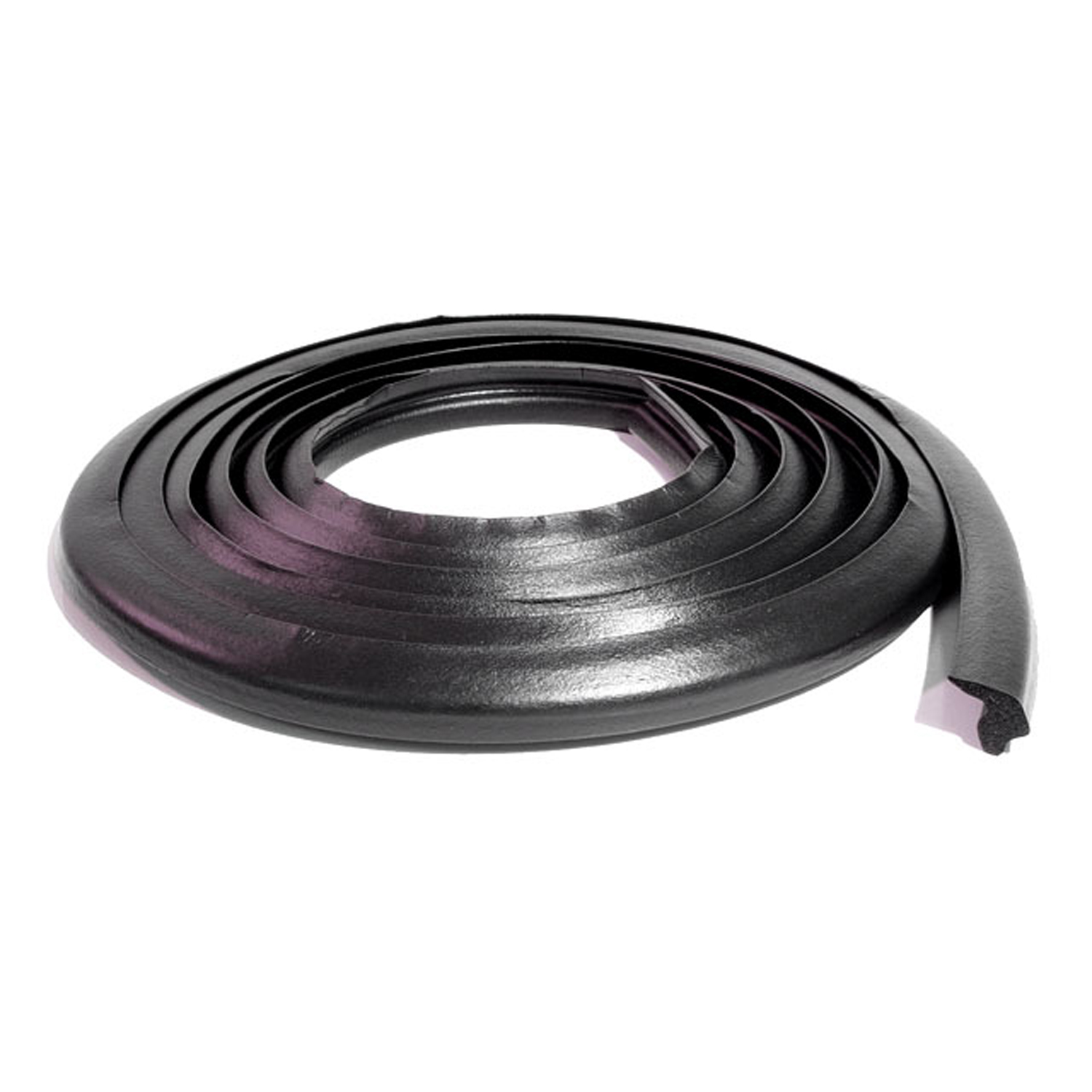 1956 Chevrolet Bel Air Trunk Seal. 187" Long. Each-TK 55Trunk Seal. 187" Long. Each
1956 Chevrolet Bel Air Trunk Seal. 187" Long. Each-TK 55Trunk Seal. 187" Long. Each 1956 Chevrolet Bel Air Unbeaded Door and Trunk Lock Gasket. 1-3/16" O.D., 7/8" I.D-UM 1600-100Unbeaded Door and Trunk Lock Gasket. 1-3/16" O.D., 7/8" I.D. Each
1956 Chevrolet Bel Air Unbeaded Door and Trunk Lock Gasket. 1-3/16" O.D., 7/8" I.D-UM 1600-100Unbeaded Door and Trunk Lock Gasket. 1-3/16" O.D., 7/8" I.D. Each 1956 Chevrolet Bel Air Vulcanized Rear Quarter Window Seals. For Safari Wagons-VQT 2000Vulcanized Rear Quarter Window Seals. For Safari Wagons. Pair
1956 Chevrolet Bel Air Vulcanized Rear Quarter Window Seals. For Safari Wagons-VQT 2000Vulcanized Rear Quarter Window Seals. For Safari Wagons. Pair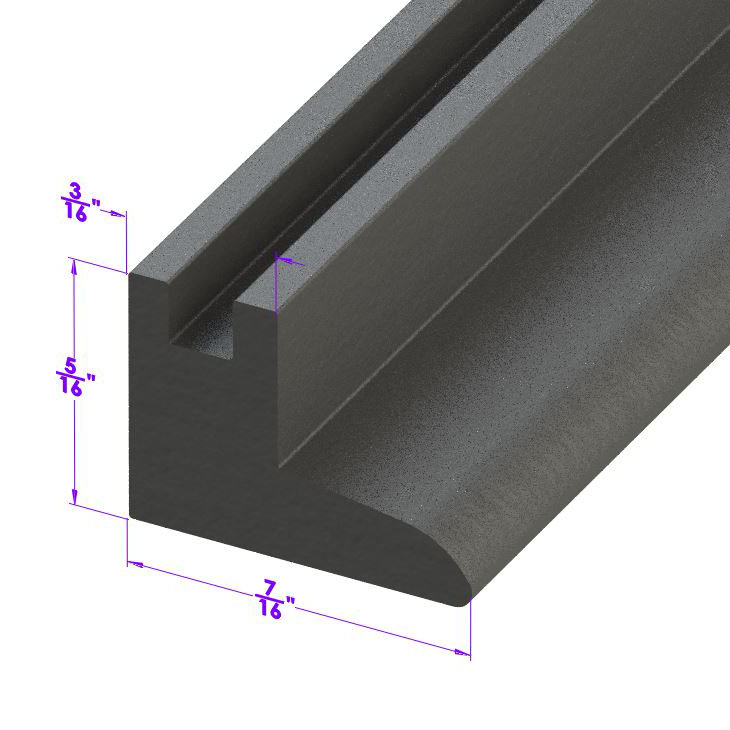 1956 Chevrolet Bel Air Vertical Seal for Vent Window. Each is 17" long. Pair-VS 2Vertical Seal for Vent Window. Each is 17" long. Pair
1956 Chevrolet Bel Air Vertical Seal for Vent Window. Each is 17" long. Pair-VS 2Vertical Seal for Vent Window. Each is 17" long. Pair 1956 Chevrolet Bel Air Windshield Pillar Seal, for Hardtops and Convertibles-VS 5Windshield Pillar Seal, for Hardtops and Convertibles. Pair
1956 Chevrolet Bel Air Windshield Pillar Seal, for Hardtops and Convertibles-VS 5Windshield Pillar Seal, for Hardtops and Convertibles. Pair 1956 Chevrolet Bel Air Vulcanized Rear Windshield Seal. 147-1/2" Long. Each-VWS 0395-RVulcanized Rear Windshield Seal. 147-1/2" Long. Each
1956 Chevrolet Bel Air Vulcanized Rear Windshield Seal. 147-1/2" Long. Each-VWS 0395-RVulcanized Rear Windshield Seal. 147-1/2" Long. Each 1956 Chevrolet Bel Air Vulcanized Rear Windshield Seal. For 2-door hardtops-VWS 0397-RVulcanized Rear Windshield Seal. For 2-door hardtops. Each
1956 Chevrolet Bel Air Vulcanized Rear Windshield Seal. For 2-door hardtops-VWS 0397-RVulcanized Rear Windshield Seal. For 2-door hardtops. Each 1956 Chevrolet Bel Air Vulcanized Windshield Seal. Each-VWS 1394Vulcanized Windshield Seal. Each
1956 Chevrolet Bel Air Vulcanized Windshield Seal. Each-VWS 1394Vulcanized Windshield Seal. Each 1956 Chevrolet Bel Air Flexible glass-run channel-WC 11-72Flexible glass-run channel. Mohair lined, cloth covered with stainless steel bead. Used on side windows. 72 in. long. Each. NOTE: $20 special shipping charge applies for domestic orders. Call or email for overseas shipping costs. Part can be sectioned in two equal lengths to reduce overseas shipping costs.
1956 Chevrolet Bel Air Flexible glass-run channel-WC 11-72Flexible glass-run channel. Mohair lined, cloth covered with stainless steel bead. Used on side windows. 72 in. long. Each. NOTE: $20 special shipping charge applies for domestic orders. Call or email for overseas shipping costs. Part can be sectioned in two equal lengths to reduce overseas shipping costs. 1956 Chevrolet Bel Air Rigid division-bar channel. Made with Zinc-plated bead-WC 1-72Rigid division-bar channel. Made with Zinc-plated bead. Used on lower side windows. 72 in. long. Each. NOTE: $20 special shipping charge applies for domestic orders. Call or email for overseas shipping costs. Part can be sectioned into two equal lengths to reduce overseas shipping costs.
1956 Chevrolet Bel Air Rigid division-bar channel. Made with Zinc-plated bead-WC 1-72Rigid division-bar channel. Made with Zinc-plated bead. Used on lower side windows. 72 in. long. Each. NOTE: $20 special shipping charge applies for domestic orders. Call or email for overseas shipping costs. Part can be sectioned into two equal lengths to reduce overseas shipping costs. 1956 Chevrolet Bel Air Rigid division-bar channel. Made with Zinc-plated bead-WC 1-96Rigid division-bar channel. Made with Zinc-plated bead. Used on lower side windows. 96 in. long. Each. NOTE: $20 special shipping charge applies for domestic orders. Call or email for overseas shipping costs. Part can be sectioned in two or three equal lengths to reduce overseas shipping costs.
1956 Chevrolet Bel Air Rigid division-bar channel. Made with Zinc-plated bead-WC 1-96Rigid division-bar channel. Made with Zinc-plated bead. Used on lower side windows. 96 in. long. Each. NOTE: $20 special shipping charge applies for domestic orders. Call or email for overseas shipping costs. Part can be sectioned in two or three equal lengths to reduce overseas shipping costs. 1956 Chevrolet Bel Air Rigid division-bar channel. Made with stainless steel bead-WC 2-72Rigid division-bar channel. Made with stainless steel bead. 72 in. long. Each. NOTE: $20 special shipping charge applies for domestic orders. Call or email for overseas shipping costs. Part can be sectioned into two equal lengths to reduce overseas shipping costs.
1956 Chevrolet Bel Air Rigid division-bar channel. Made with stainless steel bead-WC 2-72Rigid division-bar channel. Made with stainless steel bead. 72 in. long. Each. NOTE: $20 special shipping charge applies for domestic orders. Call or email for overseas shipping costs. Part can be sectioned into two equal lengths to reduce overseas shipping costs. 1956 Chevrolet Bel Air Division Bar Channel and Sweeper kit. Fits 55-57 Bel Air 2 Door HT 12 pc kit-WC 7200-12Window sweeper kit is an Original equipment style side window horizontal weatherstrip set. These strips wipe the side windows when the glass is lowered and come ready to install with finished ends and body curvature bends for a factory like appearance. They are made from original factory style material. This twelve (12) piece Division Bar Channel and Sweeper kit is professional grade and perfect for your restoration project.
1956 Chevrolet Bel Air Division Bar Channel and Sweeper kit. Fits 55-57 Bel Air 2 Door HT 12 pc kit-WC 7200-12Window sweeper kit is an Original equipment style side window horizontal weatherstrip set. These strips wipe the side windows when the glass is lowered and come ready to install with finished ends and body curvature bends for a factory like appearance. They are made from original factory style material. This twelve (12) piece Division Bar Channel and Sweeper kit is professional grade and perfect for your restoration project. 1956 Chevrolet Bel Air Division Bar Channel and Sweeper Kit. Fits 55-57 Chevy 2 Door Wagon 10pc-WC 7200-18Window sweeper kit is an Original equipment style side window horizontal weatherstrip set. These strips wipe the side windows when the glass is lowered and come ready to install with finished ends and body curvature bends for a factory like appearance. They are made from original factory style material. This Ten (10) piece Division Bar Channel and Sweeper kit is professional grade and perfect for your restoration project.
1956 Chevrolet Bel Air Division Bar Channel and Sweeper Kit. Fits 55-57 Chevy 2 Door Wagon 10pc-WC 7200-18Window sweeper kit is an Original equipment style side window horizontal weatherstrip set. These strips wipe the side windows when the glass is lowered and come ready to install with finished ends and body curvature bends for a factory like appearance. They are made from original factory style material. This Ten (10) piece Division Bar Channel and Sweeper kit is professional grade and perfect for your restoration project. 1956 Chevrolet Bel Air Glass Run Channel and Sweeper Kit. Fits 55-57 Bel Air 4 Door Sedan 14pc-WC 7200-20Window sweeper kit is an Original equipment style side window horizontal weatherstrip set. These strips wipe the side windows when the glass is lowered and come ready to install with finished ends and body curvature bends for a factory like appearance. They are made from original factory style material. This Fourteen (14) piece Glass Run Channel and Sweeper kit is professional grade and perfect for your restoration project.
1956 Chevrolet Bel Air Glass Run Channel and Sweeper Kit. Fits 55-57 Bel Air 4 Door Sedan 14pc-WC 7200-20Window sweeper kit is an Original equipment style side window horizontal weatherstrip set. These strips wipe the side windows when the glass is lowered and come ready to install with finished ends and body curvature bends for a factory like appearance. They are made from original factory style material. This Fourteen (14) piece Glass Run Channel and Sweeper kit is professional grade and perfect for your restoration project. 1956 Chevrolet Bel Air Flexible sweeper. Made with stainless steel bead-WC 8-72Flexible sweeper. Made with stainless steel bead. Used on inner and outer beltlines. Also forms easily for use with sliding quarter windows. 72 in. long. Each. NOTE: $20 special shipping charge applies for domestic orders. Call or email for overseas shipping costs. Part can be sectioned into two equal lengths to reduce overseas shipping costs.
1956 Chevrolet Bel Air Flexible sweeper. Made with stainless steel bead-WC 8-72Flexible sweeper. Made with stainless steel bead. Used on inner and outer beltlines. Also forms easily for use with sliding quarter windows. 72 in. long. Each. NOTE: $20 special shipping charge applies for domestic orders. Call or email for overseas shipping costs. Part can be sectioned into two equal lengths to reduce overseas shipping costs.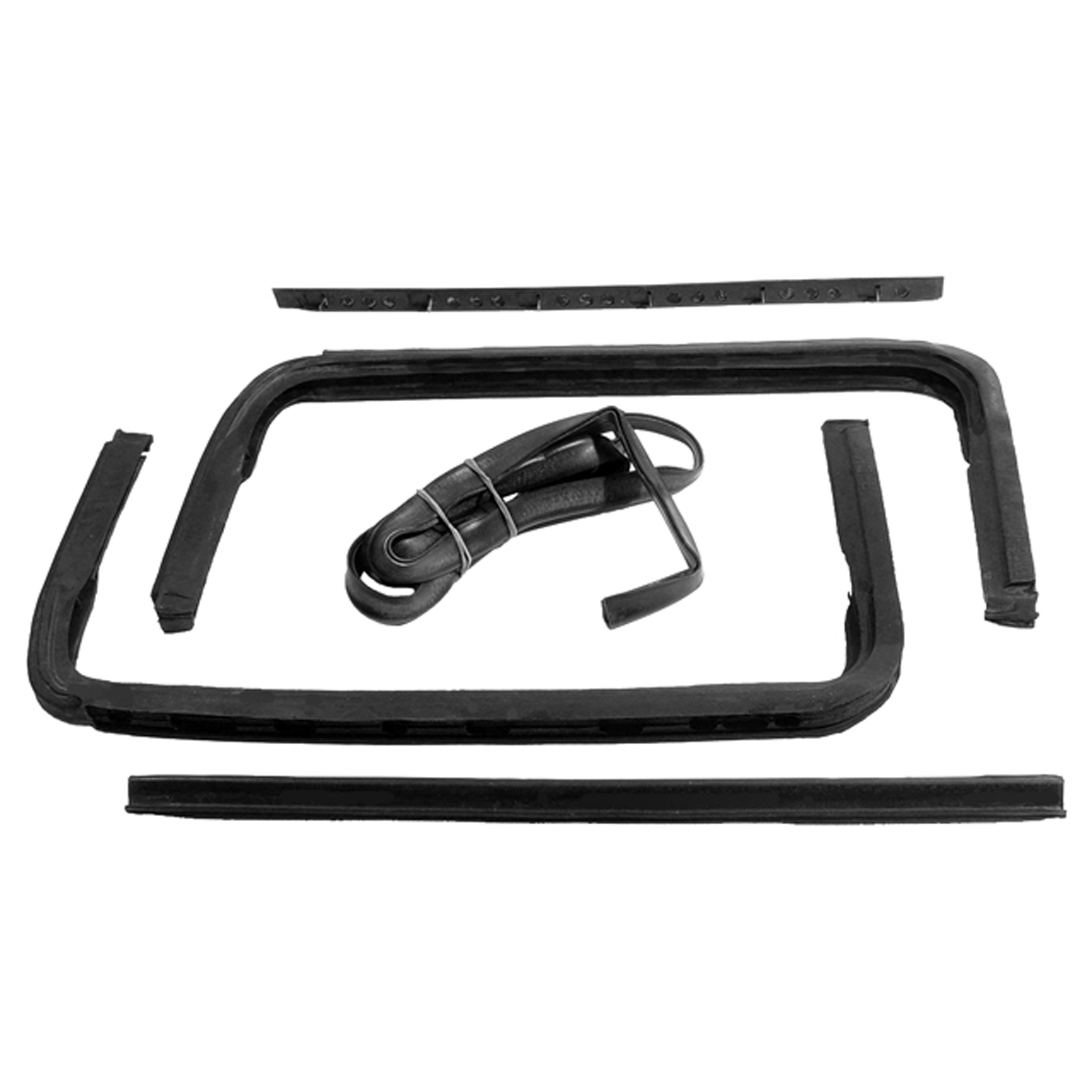 1956 Chevrolet Bel Air Front Vent Window Seals. For Convertibles and Hardtops-WR 2002Front Vent Window Seals. For Convertibles and Hardtops, Set of 4. R&L.
1956 Chevrolet Bel Air Front Vent Window Seals. For Convertibles and Hardtops-WR 2002Front Vent Window Seals. For Convertibles and Hardtops, Set of 4. R&L. 1956 Chevrolet Bel Air Rear Suspension Bumper. 2-1/4" high, 1-1/2" O.D. Each-XB 19-RRear Suspension Bumper. 2-1/4" high, 1-1/2" O.D. Each
1956 Chevrolet Bel Air Rear Suspension Bumper. 2-1/4" high, 1-1/2" O.D. Each-XB 19-RRear Suspension Bumper. 2-1/4" high, 1-1/2" O.D. Each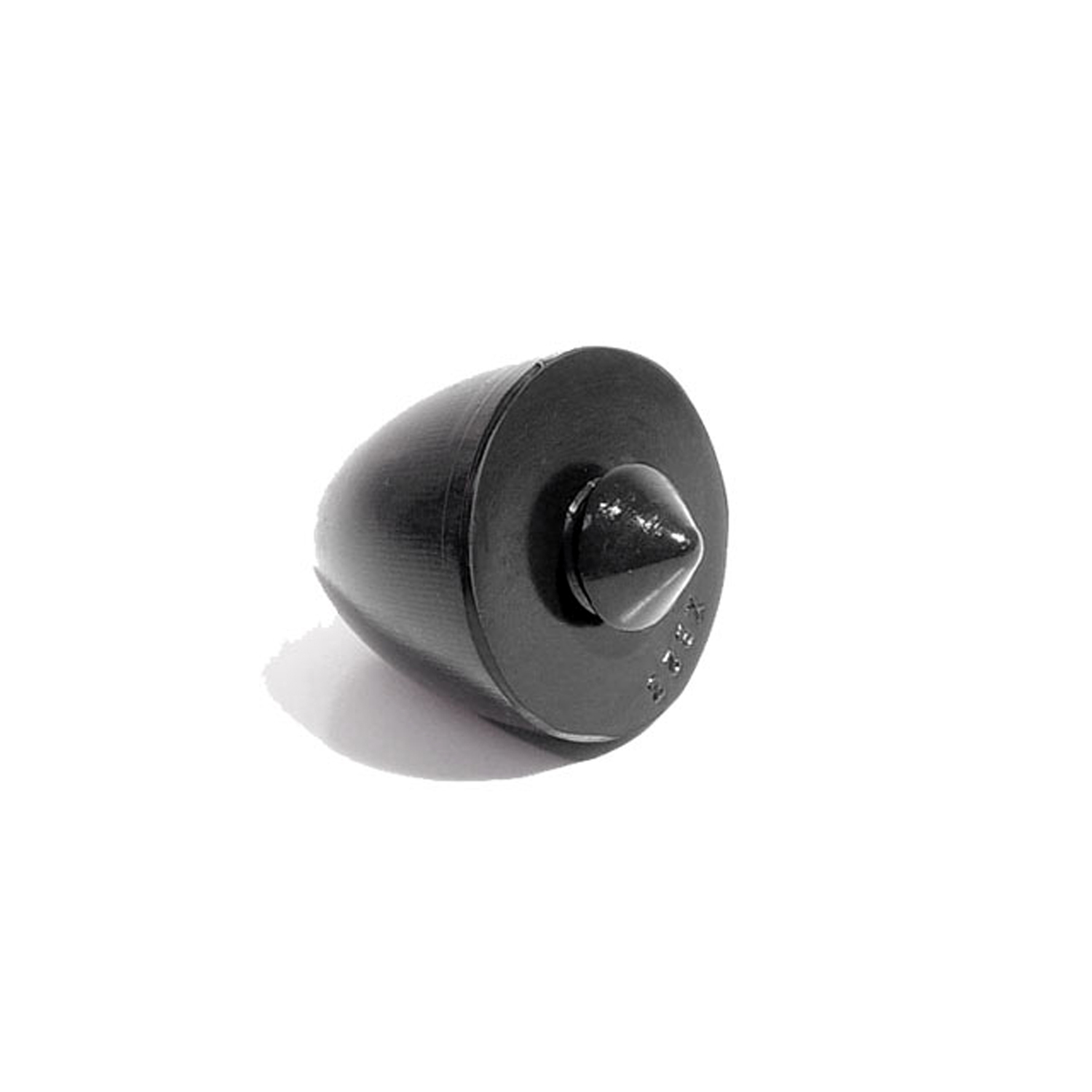 1956 Chevrolet Bel Air Front Suspension Bumper. 1-5/8" high. Each-XB 23Front Suspension Bumper. 1-5/8" high. Each
1956 Chevrolet Bel Air Front Suspension Bumper. 1-5/8" high. Each-XB 23Front Suspension Bumper. 1-5/8" high. EachWhy Choose Metro?
For over 100 years, Metro Moulded Parts has been the pinnacle of quality in classic car restoration parts. Our commitment to precision and authenticity in every component ensures a perfect fit and an OEM-level appearance.
- Expert Craftsmanship & Quality: Each part is a testament to our dedication to reliability and perfection, crafted from original designs and thoroughly tested.
- Advanced Technology: We use cutting-edge techniques to create flawless, long-lasting parts that surpass others in performance.
- SuperSoft Sponge – The Ultimate Door Seal: Not only are our door seals 30% softer than competitors', but they're also guaranteed to never leak. They effectively reduce wind and road noise, enhancing your classic car's comfort and driving experience.
- Proudly American: Our parts are a product of American craftsmanship, made in the USA with a spirit of excellence and heritage.
- Unrivaled Warranty: We back our products with a 30-year industry-leading warranty, a testament to our confidence in their quality.
Join us in preserving the legacy of classic cars with parts that are crafted for perfection, not just made.

